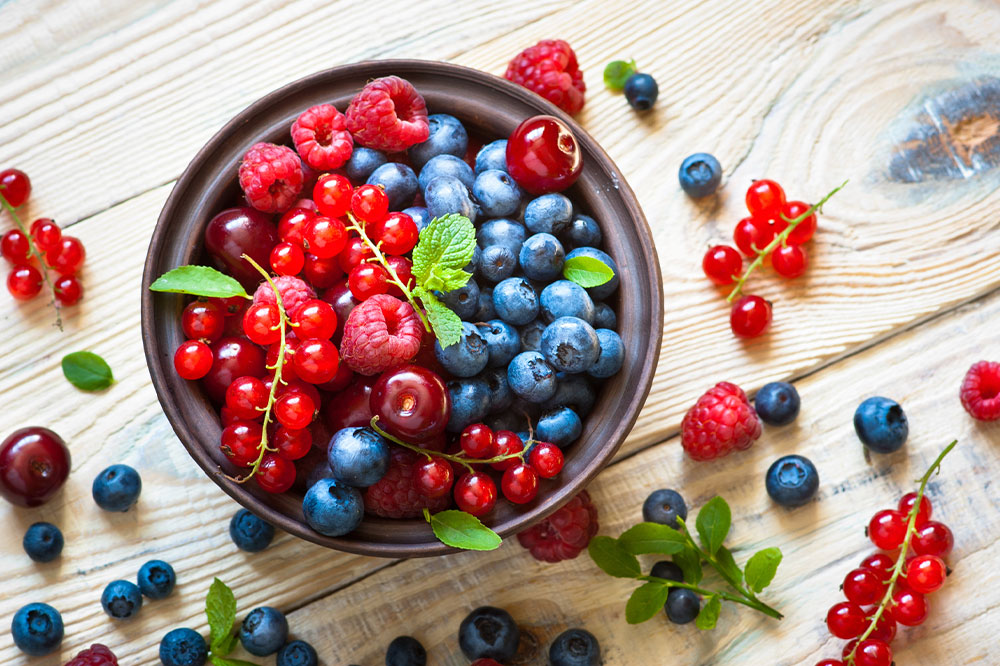10 common human foods that are unsafe for dogs

Dogs have different digestive systems compared to human beings. This is why the foods that are palatable and healthy for people do not necessarily translate into good meals for their pet dogs. In fact, there are specific human foods that are downright dangerous for furry companions. In many worst-case scenarios, feeding a pet dog certain human foods can be life-threatening too. Considering this, here are some human foods that are harmful to dogs:
Cherries
Snacking on cherries is a favorite pastime for many people. In fact, one can always find a bowl full of fresh and delicious cherries on dining tables everywhere. Unfortunately, cherries are deeply toxic to dogs. The stems, pits, and leaves of cherries contain a deadly chemical known as cyanide. This toxin is known to kill tissues in the body.
Apart from the stem, pits, and leaves, even the fleshy part of cherries can get stuck in the dog’s throat and cause them to choke. All these aspects make cherries one of the most common human foods harmful to dogs.
Mushrooms
Mushrooms are rich in nutrients and taste, which makes them an automatic component for most health-conscious individuals’ daily meals. However, like cherries, mushrooms also possess potentially fatal elements for dogs. Not every mushroom is dangerous. In fact, only a few of them are considered to be life-threatening when it comes to dogs. However, differentiating the bad mushrooms from the harmless ones is tricky, even for the most accomplished botanists. To stay safe, one can remove any traces of mushrooms from their pet dog’s daily meals.
Salt
Foods with any composition of salt in them become harmful to dogs. Here’s why: salty food and salts make dogs’ mouths dry, causing them to feel extremely thirsty. Additionally, salt also causes dogs to urinate more than usual. As a result, salt can cause major dehydration and other issues stemming from a lack of fluids if one does not constantly provide their dogs with water during the day.
A health condition in dogs known as sodium ion poisoning is also directly linked to salt intake. Moreover, it also causes high temperature, seizures, tremors, vomiting, diarrhea, and, in some cases, death in dogs if salt is consumed inordinately.
Ice cream
While gorging on some delicious ice cream, one may feel tempted to let their pet dog join the fun. However, giving them ice cream can be a major health hazard. In fact, any kind of dairy product is bad for a canine’s health. A dog’s digestive system does not support milk products, so feeding them ice cream, milk, or cheese can cause massive compatibility issues. A canine’s body does not produce the enzyme that breaks down the sugar found in milk. So, dogs eating a cup of ice cream may vomit immediately and develop long-term gastrointestinal problems.
In addition, milk can trigger allergic reactions in dogs and cause itching and other health problems.
Coffee
Caffeine is not the greatest food for humans, so one can imagine how bad coffee can be for pet dogs. Simply put, giving one’s pet canine even a hint of coffee is a major no-no. Unlike humans, who use coffee to feel awake and stimulated, dogs are incredibly sensitive to caffeine. Even a small amount of caffeine can be incredibly toxic to them. This is why coffee is considered a prominent entry on any listicle about human foods harmful to dogs.
Grapes/raisins
Grapes and raisins are as debilitative to a dog’s health as coffee. These foods can cause kidney failure in canines. Additionally, if a dog eats grapes, it will likely have issues such as vomiting, diarrhea, and lethargy within the next 12 hours. Other problems, such as decreased appetite, increased urination, and dehydration, arise when the earlier symptoms are not addressed properly and on time. If this condition is not addressed soon, it may prove fatal too. Therefore, it is best to keep these human foods away from the pets.
Almonds
The next unsafe food for dogs is almonds. While nuts, in general, are unsavory for dogs and must not be given (especially macadamia nuts), one needs to know about the devastating effects of almonds on a canine’s body to fully understand why this particular food should be nowhere near a pet canine.
Almonds can block a dog’s windpipe and cause injuries to its esophagus if they are not chewed thoroughly. A specifically dangerous combination is salted almonds. This food can cause one’s pet canine to develop heart disease.
Chocolates
Chocolates contain generous amounts of caffeine, which makes them automatically a harmful food for dogs. However, chocolate has other issues too. For instance, chocolate contains a stimulant chemical named theobromine in addition to caffeine. These chemicals are nearly impossible for dogs’ stomachs to metabolize properly. So, after wolfing down a bar of chocolate, a dog will most likely show symptoms such as stomach pain, vomiting, diarrhea, and dehydration.
Although the toxicity of chocolate varies by its size, type, and the species of dog in question (basically, the darker the chocolate, the more harmful it is for dogs), it is wise to keep dogs away from chocolate altogether.
Avocados
Avocados are rich in a chemical called persin. While humans can include this fruit in their meals without negatively affecting their digestive system, the same cannot be said about dogs.
Intake of avocados can cause fluid retention in dogs’ lungs, pancreas, heart, and abdomen. That may result in oxygen deprivation and, in the worst cases, death. To steer clear of such outcomes, it is advisable to keep dogs away from avocados.
Yeast dough
Yeast dough can inflate a dog’s stomach and release toxic ethanol into the bloodstream. One needs to keep yeast dough away from pet canines to avoid conditions such as toxicosis directly brought about by its intake.


